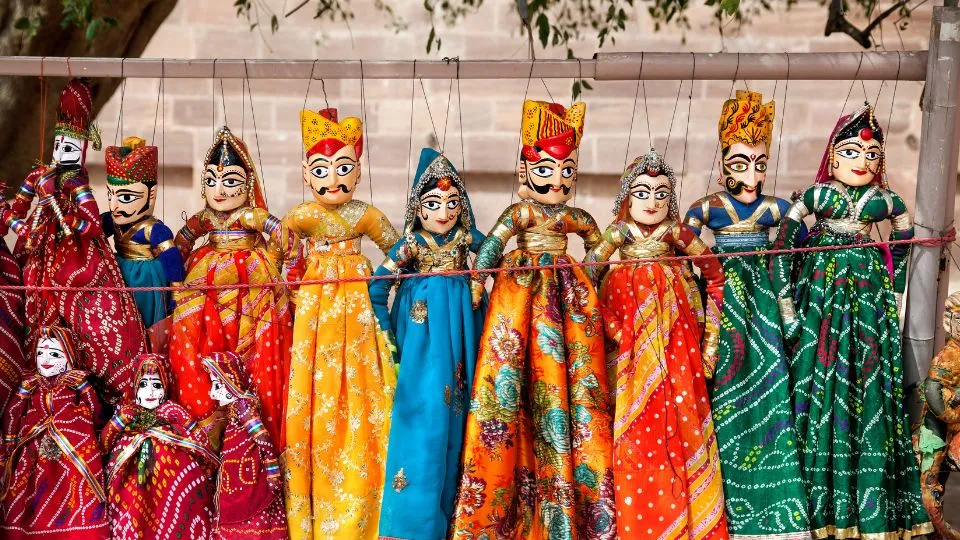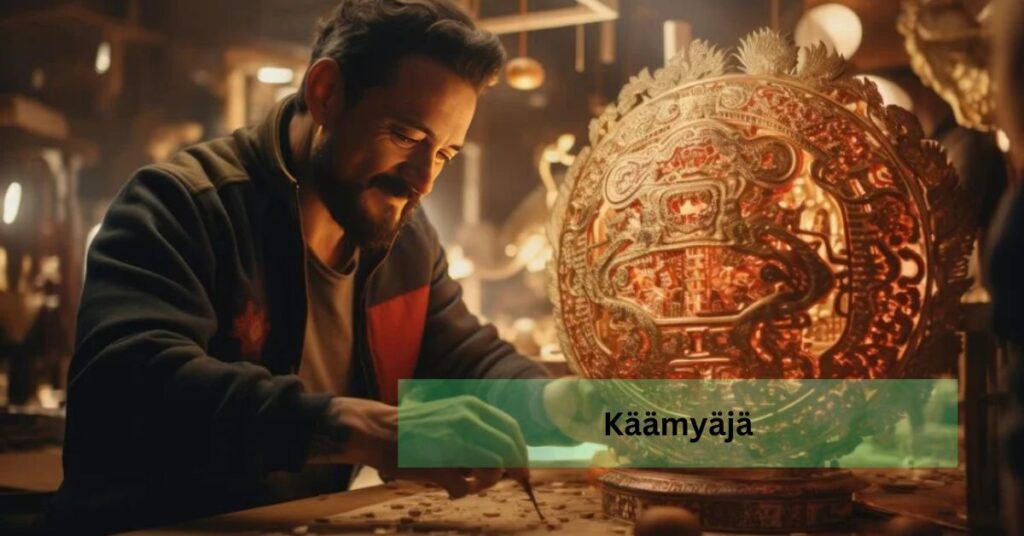Käämyäjä is a traditional Finnish craft that involves coiling and pattern-making using natural materials. This art form passed down through generations, is a testament to Finland’s rich cultural heritage.
In this article, we will discuss the fact that Käämyäjä is not just a craft; it is a medium of expression, a symbol of identity, and a link between the past and the present.
Historical Background
Ancient Origins
The roots of Käämyäjä can be traced back to prehistoric Finland. In ancient times, it was more than just a decorative art; it was a vessel for conveying profound spiritual concepts and communal values.
Each intricate pattern and motif used in Käämyäjä was imbued with meaning, forming a visual language that connected individuals to their community and its shared beliefs.
The art of coiling and pattern-making was an integral part of Finnish life, reflecting the people’s connection to nature and their environment.
Evolution Through the Ages
As centuries passed, Käämyäjä evolved, adapting to the changing cultural and societal influences. During the medieval period, the craft saw a surge in its use, particularly in creating religious artifacts and everyday items.
The intricate designs and meticulous craftsmanship of Käämyäjä became a hallmark of Finnish artisanship. Despite the changes brought by modernization, the essence of Käämyäjä remained intact, preserving its cultural significance and artistic integrity.
Cultural Significance

Symbol of Identity
Käämyäjä holds a special place in Finnish culture as a symbol of communal identity and spiritual heritage. The elaborate designs and symbolic elements of Käämyäjä reflect the values and beliefs of the Finnish people.
It is a cultural pillar that has preserved the essence of Finnish identity, bridging the gap between generations.
Through Käämyäjä, the stories, traditions, and values of the Finnish people are passed down, ensuring that their cultural heritage remains vibrant and alive.
Intergenerational Bonding
One of the most significant aspects of Käämyäjä is its role in fostering intergenerational bonds. The craft has been a bridge between generations, with elders teaching the younger members of the community the techniques and meanings behind the patterns.
This transmission of knowledge and skills has helped to maintain the continuity of the tradition. It has also provided a means for family members to connect, share stories, and strengthen their bonds.
Read: Google SEO Certification JackYan: Unveiling Expertise and Its Impact
Techniques and Materials
Traditional Techniques
The traditional techniques of Käämyäjä involve manual coiling using natural materials such as softwoods and linen. The process begins with selecting appropriate materials, which are prepared and twisted by hand.
The coiling is done meticulously, with each twist and turn creating intricate patterns that are both beautiful and meaningful.
The use of natural materials not only adds to the aesthetic appeal of the craft but also reflects the sustainable practices of the Finnish people.
Modern Adaptations
In the modern era, Käämyäjä has continued to evolve, incorporating new materials and techniques. Contemporary artisans experiment with innovative methods, blending traditional techniques with modern creativity to push the boundaries of the craft.
This fusion of old and new has resulted in unique and captivating pieces of art that resonate with today’s audiences while honoring the traditions of the past.
Industrial Käämyäjä
In addition to traditional and modern handmade techniques, Käämyäjä has found its place in the industrial sector. Automated machines such as ring spinning and rotor spinning machines are used in textile mills for the large-scale production of yarn and thread.
These machines allow for efficient and consistent production, making Käämyäjä more accessible to a wider audience while maintaining high standards of quality.
Artistic and Symbolic Elements
Craftsmanship
The craftsmanship of Käämyäjä is characterized by its meticulous attention to detail and the diversity of its forms. From wearable accessories to ceremonial sculptures, each piece is a testament to the skill and dedication of its creator.
The process of creating Käämyäjä requires precision, patience, and a deep understanding of the materials and techniques. This dedication to craftsmanship ensures that each work is a masterpiece in its own right.
Narrative Symbolism
At its core, Käämyäjä is a storytelling medium. Every piece of Käämyäjä art conveys a rich tapestry of narratives, from ancient myths to modern tales. The patterns and motifs used in Käämyäjä are not just decorative; they tell stories and preserve the cultural heritage of the Finnish people.
Each design element has its meaning and significance, contributing to the overall narrative of the piece. Through Käämyäjä, the stories and traditions of the Finnish people are preserved and perpetuated for future generations.
Contemporary Relevance

Preservation Efforts
Despite the challenges posed by modernization and globalization, efforts are underway to preserve Käämyäjä. These efforts include educational initiatives and cultural awareness campaigns to promote appreciation for this cherished art form.
Museums, cultural organizations, and community groups are working together to ensure that Käämyäjä remains an integral part of Finnish cultural heritage. By documenting techniques, patterns, and stories, these initiatives help to safeguard the legacy of Käämyäjä for future generations.
Innovation and Creativity
Modern practitioners of Käämyäjä are not only preserving the tradition but also infusing new life into it through innovation and creativity. By experimenting with new materials and techniques, they are pushing the boundaries of what can be achieved with Käämyäjä.
This creativity ensures that the craft remains relevant and appealing to contemporary audiences. It also opens up new possibilities for artistic expression, allowing Käämyäjä to continue evolving and thriving.
Read: AZP600X: Revolutionizing Technology Across Industries
Practical Applications
Integration with Other Crafts
Käämyäjä is a versatile art form that can be integrated with other crafts to create unique, hybrid pieces. This integration allows artisans to explore new designs and aesthetics, blending elements of Käämyäjä with other craft traditions.
The result is a fusion of styles that is both innovative and respectful of the core principles of Käämyäjä. This versatility makes Käämyäjä an attractive option for contemporary artists and designers.
Economic Benefits
In the industrial sector, Käämyäjä offers significant economic benefits. Using automated machines for large-scale production reduces labor costs and increases production rates, making it a valuable asset in the textile industry.
Additionally, the consistent quality and efficiency of industrial Käämyäjä ensure that the products meet high standards, making them competitive in the global market. This economic viability helps to sustain the tradition of Käämyäjä while providing opportunities for growth and development.
Challenges and Future Path

Preservation Amidst Modern Threats
Käämyäjä faces several challenges in the modern world, including economic pressures and the erosion of cultural significance due to globalization. The craft’s survival depends on the concerted efforts of individuals, organizations, and communities to preserve and promote its cultural heritage.
Addressing these challenges requires a multifaceted approach that includes education, awareness, and support for artisans.
Promoting to Future Generations
Ensuring the continued relevance of Käämyäjä involves promoting it to future generations. Educational programs and cultural initiatives are crucial in fostering appreciation and pride in this art form.
By engaging young people and encouraging them to learn and practice Käämyäjä, these programs help to keep the tradition alive.
Additionally, incorporating Käämyäjä into contemporary art and design can attract new audiences and create opportunities for innovation.
Read: Exploring “www.liveamoment.org”
Frequently Asked Questions:
1. What Are The Primary Materials Used In Käämyäjä?
The primary materials include softwoods like pine for wood-based projects and linen for fabric-based projects. Both are chosen for their ease of use and durability.
2. Can Beginners Learn Käämyäjä Easily?
Yes, beginners can learn Käämyäjä with basic tools and materials. Starting with simple patterns and gradually advancing helps in mastering the craft.
3. Is Käämyäjä Practiced Outside Finland?
While it is primarily a Finnish tradition, Käämyäjä has gained global interest among craft enthusiasts who appreciate its intricate designs and cultural significance.
4. How Long Does It Take To Complete A Käämyäjä Project?
The time required varies based on the project’s complexity. Simple items can take a few hours, while intricate designs may take several days or weeks.
5. Are There Any Famous Käämyäjä Artists?
Yes, several renowned Käämyäjä artists are known for their masterful techniques and innovative designs, which have contributed significantly to the craft’s preservation and evolution.
6. What Tools Are Essential For Käämyäjä?
Essential tools include a knife for carving, needles for stitching, and various coiling aids. These tools help in creating precise and detailed patterns.
7. Can Käämyäjä Be Used To Make Functional Items?
Absolutely. Käämyäjä can be used to create both decorative and functional items, such as baskets, wall hangings, and even furniture.
8. Are There Any Käämyäjä Festivals Or Exhibitions?
Yes, Finland hosts various festivals and exhibitions celebrating Käämyäjä, where artisans showcase their work and share techniques with visitors.
9. How Is Käämyäjä Different From Other Coiling Crafts?
Käämyäjä is distinguished by its specific patterns and techniques rooted in Finnish cultural traditions, making it unique among global coiling crafts.
10. What Are The Environmental Benefits Of Käämyäjä?
Käämyäjä emphasizes the use of natural and sustainable materials, promoting eco-friendly practices and reducing the environmental impact compared to synthetic materials.
Conclusion
Käämyäjä stands as a testament to the enduring power of cultural expression. It is a vibrant symbol of Finnish identity and tradition, weaving together the threads of past and present into a rich tapestry of artistic heritage.
As it continues to evolve and adapt, Käämyäjä remains a cherished and relevant art form that resonates with people around the world. With ongoing efforts to innovate and preserve, Käämyäjä is poised to continue thriving for generations to come.
Read more:


